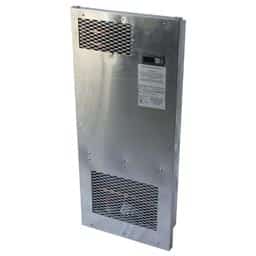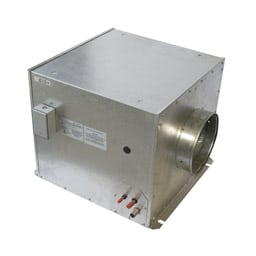Wines improve most when stored under the ideal environmental conditions. The best wine cellar environment for storing and aging wines long-term is one with a temperature range between 55 to 57 degrees Fahrenheit and humidity levels regulated within 50 to 70 percent. Investing in a wine cellar air conditioning system will help preserve the texture and flavor of wines.
A climate control system is an important component of a wine cellar, because it protects wines against harmful environmental factors (such as temperature and humidity fluctuations). Wine cellar refrigeration units are engineered to provide optimal climate conditions, wherein wines can age to perfection. However, the proper cooling system for a wine cellar must have reliable cooling features and safety standards.
Wine Cellar Refrigeration Units – Various Models
- Self-Contained Wine Cellar Refrigeration Units
Different models of wine cellar refrigeration units are available to accommodate various applications and design preferences. Self-contained, through the wall units are ideal for wine rooms with small storage capacities. These cooling systems do not take up floor space as they are simply mounted on the wall.
- Wall-Mounted Wine Cellar Refrigeration Units
Of all wine cellar climate control systems, through the wall units are the most affordable and the easiest to install. However, wall mounted wine cellar refrigeration units can generate a lot of noise because they house both the evaporator and condenser, which is the noisiest part of the cooling system.
- Split Wine Cellar Refrigeration Units
For wine collectors who prefer a quiet environment, a split wine cooling system is designed to provide a noise-free wine cellar space. A split wine cellar air conditioning system divides the evaporator and condenser into two separate units.
This split feature allows for remote installation of the condenser. It can be placed in a remote location such as the attic or basement. The condenser can also be installed outdoors, provided the unit is outfitted with a low ambient kit, to protect the equipment from a moderate to extreme cold environment.
- Ducted Wine Cellar Refrigeration Units
Another alternative is a ducted climate control system, that makes use of ducting kits to introduce cold air into and exhaust warm air away from a wine cellar. One of the benefits of this cooling unit is the complete absence of physical equipment in the room, contributing to the aesthetic quality of the wine cellar. It also allows the wine collector to maximize storage space.
Maintenance for Wine Cellar Air Conditioning or Refrigeration Units
Much like any other equipment, cooling systems in refrigerated wine cellars will most likely break or wear out over time. It is important for wine collectors to check on their cooling equipment on a regular basis to ensure that it is in excellent working condition. One does not need to be an HVAC expert to determine if there is something wrong with their refrigeration unit.
Some telltale signs that can indicate it’s time to replace a wine cellar air conditioning system are a broken door gasket and unusual noises. A broken door gasket can provide an erroneous temperature measurement, which can lead to premature aging of wines. Every distinct and unusual sound given off by wine cooling equipment can point to a certain problem.
For instance, a hissing sound can indicate leakage of refrigerant, while a high pitched noise can signify a worn out fan belt. Conducting regular check-ups of a wine cellar cooling system is one way to make sure that it is functioning accordingly, and thus maintaining the ideal climate conditions for aging wines.
Visit our blog page now to learn more about wine cellar cooling.


